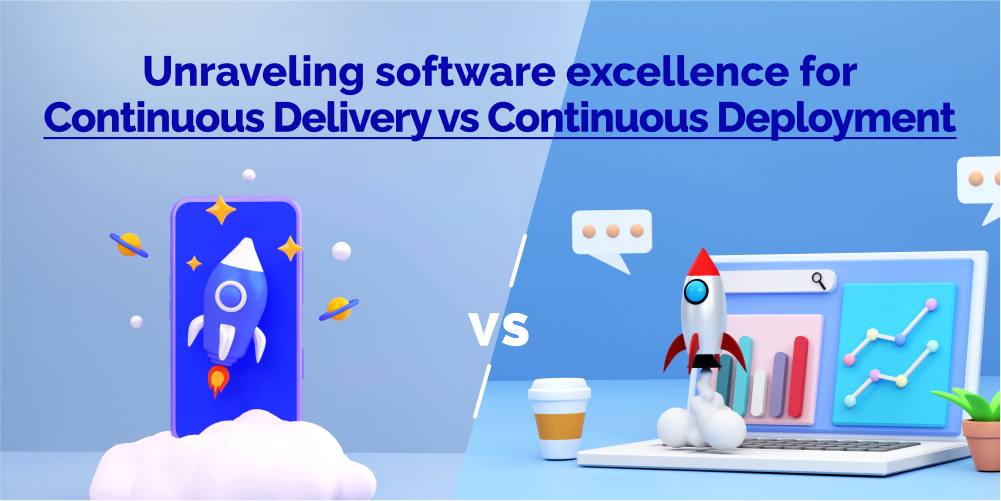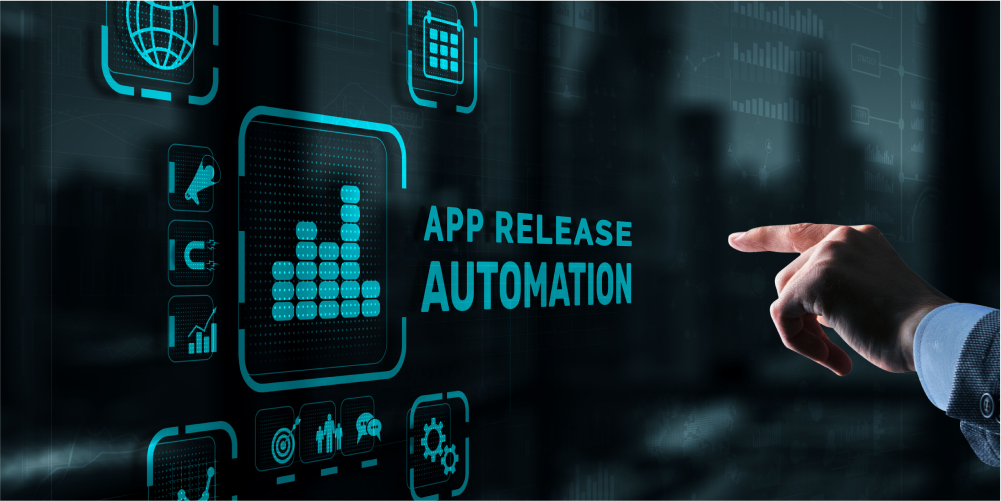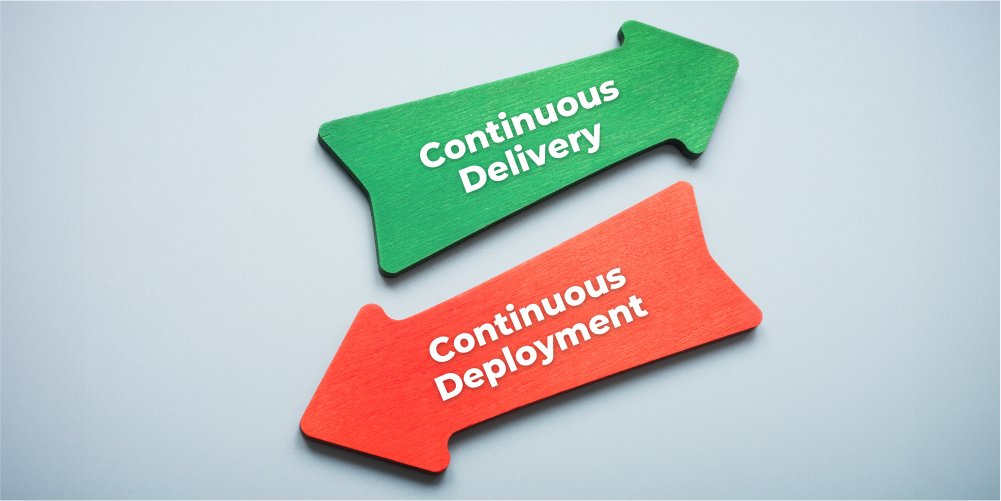Software Product Development, zBlog
Continuous Delivery vs. Continuous Deployment: Unraveling the Differences and Unlocking Software Delivery Excellence
trantorindia | Updated: May 27, 2024

Introduction
In today’s fast-paced digital landscape, the ability to rapidly deliver high-quality software has become a critical competitive advantage. Organizations are constantly seeking ways to accelerate time-to-market, respond swiftly to changing customer needs, and gain a competitive edge. Enter the realm of continuous delivery and continuous deployment – two powerful practices that have revolutionized the software delivery lifecycle.
While often used interchangeably, continuous delivery vs continuous deployment are distinct yet complementary approaches to software release management. Understanding the nuances between these two practices is crucial for organizations aiming to optimize their software delivery processes, enhance agility, and foster a culture of continuous innovation.
In this comprehensive blog, we’ll dive deep into the world of continuous delivery vs continuous deployment, exploring their definitions, key differences, benefits, and practical implications for software development teams. Whether you’re a seasoned DevOps professional or just embarking on your journey toward software delivery excellence, this guide will equip you with the knowledge and insights needed to make informed decisions and unlock the full potential of these transformative practices.
Continuous Delivery: Enabling Rapid and Reliable Software Releases

Continuous delivery is a software development practice that focuses on automating the entire build, test, and deployment process, ensuring that software is always in a releasable state. The primary goal of continuous delivery is to establish a streamlined, repeatable, and reliable pipeline that allows teams to deploy software changes to production environments quickly and with minimal risk.
At the core of continuous delivery lies the principle of automated testing and code verification. Every code change, whether a new feature, bug fix, or enhancement, must undergo a comprehensive suite of automated tests, including unit tests, integration tests, and end-to-end tests. This automated testing process ensures that the codebase remains stable, functional, and free of regressions, even as new changes are introduced.
Once the code has successfully passed all tests, it is automatically packaged and prepared for deployment. However, the actual deployment to production environments is a manual step, typically initiated by a release manager or a designated team member. This manual approval step allows for additional checks, validations, and any necessary coordination before pushing the changes live.
By implementing continuous delivery, organizations can achieve several key benefits:
- Faster time-to-market: With automated pipelines and testing, teams can rapidly incorporate new features, bug fixes, and enhancements into their codebase, reducing the time it takes to get changes into the hands of customers.
- Increased reliability and quality: Automated testing and code verification ensure that changes are thoroughly validated before deployment, minimizing the risk of introducing bugs or regressions into production environments.
- Improved collaboration and visibility: Continuous delivery fosters transparency and collaboration among cross-functional teams, enabling better communication, shared understanding, and faster feedback loops.
- Reduced risk and deployment complexity: By automating the build, test, and deployment processes, continuous delivery eliminates manual errors, streamlines deployments, and reduces the overall complexity of release management.
Continuous Deployment: Automating the Final Step

Building upon the foundations of continuous delivery, continuous deployment takes the software release process one step further by fully automating the deployment to production environments. With continuous deployment, every code change that successfully passes the automated testing and verification pipeline is automatically deployed to production, without manual approval or intervention.
Continuous deployment is often associated with a “deploy-on-green” mindset, where any code change that passes the required tests and quality gates is immediately released to customers. This approach eliminates the manual approval step found in continuous delivery, enabling organizations to achieve even faster release cycles and accelerated time-to-market.
While continuous deployment may seem like a natural progression from continuous delivery, it requires a significant cultural shift and a robust set of practices and safeguards. Organizations must have a high degree of confidence in their automated testing and verification processes, as well as a mature DevOps culture that fosters collaboration, transparency, and a shared responsibility for quality and reliability.
Key benefits of implementing continuous deployment include:
- Accelerated release cycles: By fully automating the deployment process, teams can push changes to production environments multiple times a day, enabling rapid iteration and faster delivery of new features and improvements to customers.
- Reduced lead time: The time between committing a code change and delivering it to customers is significantly reduced, enabling organizations to respond swiftly to changing market demands and customer feedback.
- Increased agility and innovation: With the ability to rapidly deploy changes, teams can experiment, innovate, and quickly validate new ideas and features, fostering a culture of continuous learning and improvement.
- Improved operational efficiency: Continuous deployment eliminates manual deployment efforts, freeing up resources and reducing the overhead associated with release management processes.
Choosing Between Continuous Delivery vs Continuous Deployment

The decision to adopt continuous delivery or continuous deployment is highly dependent on an organization’s specific context, including its culture, risk tolerance, industry regulations, and the nature of the software being developed.
Continuous delivery is often a more suitable approach for organizations operating in regulated industries, such as finance, healthcare, or government sectors, where strict compliance and governance requirements may necessitate manual approval steps before deploying to production environments. Additionally, organizations with complex or mission-critical applications may prefer the added control and oversight provided by continuous delivery, as it allows for thorough validation and testing before pushing changes live.
On the other hand, continuous deployment may be better suited for organizations with a strong DevOps culture, robust automated testing practices, and a high tolerance for risk. Companies operating in fast-paced, rapidly evolving markets, such as e-commerce, online services, or consumer-facing applications, may benefit greatly from the accelerated release cycles and increased agility offered by continuous deployment.
It’s important to note that continuous delivery vs continuous deployment are not mutually exclusive; organizations can adopt a hybrid approach, where some applications or services are deployed through continuous delivery, while others leverage continuous deployment. This flexible approach allows organizations to balance the need for speed and innovation with the necessity for stability and risk mitigation.
Establishing the Foundation for Success

Regardless of whether an organization chooses continuous delivery or continuous deployment, there are several key foundational elements that must be in place to ensure successful implementation and maximize the benefits of these practices:
- Robust automated testing and verification: Comprehensive and reliable automated testing is the cornerstone of both continuous delivery and continuous deployment. Teams must invest in building and maintaining a robust suite of automated tests, including unit tests, integration tests, end-to-end tests, and performance tests, to ensure the stability and quality of their software releases.
- Continuous integration and build automation: Automating the build and integration processes is crucial for enabling rapid and reliable software delivery. Tools and practices such as version control systems, continuous integration servers, and build automation tools should be implemented to streamline and standardize the build and integration processes.
- Infrastructure as Code (IaC) and environment parity: Consistent and repeatable environments are essential for reliable software delivery. Infrastructure as Code (IaC) practices, combined with containerization and virtualization technologies, enable teams to create and manage consistent environments across development, testing, and production, reducing the risk of environment-related issues.
- Monitoring and observability: Robust monitoring and observability solutions are critical for detecting and responding to issues in production environments. Teams should implement comprehensive monitoring and logging solutions, as well as tools for tracing and analyzing application performance and behavior, to quickly identify and resolve any issues that may arise after deployment.
- Cultural transformation and DevOps practices: Adopting continuous delivery or continuous deployment requires a cultural shift toward DevOps practices, fostering collaboration, shared responsibility, and a focus on automating and streamlining the entire software delivery lifecycle.
- Scalable and resilient architecture: As software systems become more complex and distributed, it’s essential to design and implement architectures that are scalable, resilient, and capable of handling frequent deployments without impacting system availability or performance.
Navigating the Continuous Delivery vs Continuous Deployment Journey

Implementing continuous delivery or continuous deployment is a transformative journey that requires careful planning, execution, and ongoing optimization. Organizations should approach this journey with a phased and iterative approach, gradually introducing automation, testing, and cultural changes to ensure a smooth transition and minimize disruptions.
One effective strategy is to start by implementing continuous delivery practices, automating the build, test, and deployment processes, and establishing a reliable pipeline for delivering software changes. Once teams have gained confidence in their automated testing and validation processes, and the necessary cultural shifts have taken root, organizations can explore transitioning to continuous deployment, initially targeting non-critical applications or services.
Throughout the journey, it’s crucial to foster open communication, collaboration, and knowledge sharing among cross-functional teams. Continuous feedback loops, retrospectives, and continuous improvement cycles should be embedded into the process, enabling teams to identify bottlenecks, address challenges, and continuously refine their practices.
Additionally, organizations should leverage industry best practices, frameworks, and tools that align with their specific needs and technology stacks. Platforms like AWS, Azure, and Google Cloud Platform offer a wide range of services and tools to support continuous delivery and continuous deployment practices, including containerization solutions, serverless architectures, and fully managed deployment pipelines.
Conclusion
In the ever-evolving digital landscape, the ability to rapidly and reliably deliver high-quality software has become a critical success factor for organizations across industries. Continuous delivery and continuous deployment represent powerful practices that enable teams to streamline their software delivery processes, accelerate time-to-market, and foster a culture of continuous innovation.
While continuous delivery and continuous deployment share some similarities, they differ in their approach to the final deployment step. Continuous delivery maintains a manual approval process before deploying to production environments, providing an additional layer of control and oversight. Continuous deployment, on the other hand, fully automates the deployment process, enabling faster release cycles and increased agility.
The choice between continuous delivery and continuous deployment depends on an organization’s specific context, including its culture, risk tolerance, industry regulations, and the nature of the software being developed. Continuous delivery may be more suitable for organizations operating in regulated industries or with mission-critical applications, while continuous deployment may be better suited for companies with a strong DevOps culture and a high tolerance for risk.
Regardless of the approach chosen, successful implementation of continuous delivery or continuous deployment requires a solid foundation of robust automated testing, continuous integration, infrastructure as code, monitoring, and observability, and a cultural transformation towards DevOps practices.
As organizations embark on this transformative journey, it’s essential to approach it with a phased and iterative mindset, gradually introducing automation, testing, and cultural changes to ensure a smooth transition. Leveraging industry best practices, frameworks, and tools that align with specific needs and technology stacks can further support and streamline the adoption of these practices.
Ultimately, the true power of continuous delivery and continuous deployment lies in their ability to empower organizations to deliver high-quality software rapidly, respond swiftly to changing customer needs, and foster a culture of continuous learning and innovation. By embracing these practices, organizations can unlock new levels of agility, efficiency, and competitive advantage in today’s fast-paced digital landscape.
At Trantor, we understand the transformative potential of continuous delivery and continuous deployment practices. Our team of experienced DevOps consultants and experts is dedicated to guiding organizations through the complexities of implementing these practices, ensuring a seamless transition, and maximizing the benefits of rapid and reliable software delivery.
Embrace the future of software delivery excellence and accelerate your digital transformation with Trantor as your trusted partner. Contact us today to learn more about our services and how we can support your organization’s continuous delivery and deployment initiatives.




